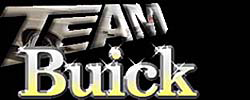Anybody got rebuild manuals with this info? I've searched all over the internet, and found nothing regarding this particular measurement. I've found 1042 sites with crankshaft journal dimensions, 1359 sites with torque specifications, 833 with piston-to-wall clearance info, and even found one site that says the length of the 263 dipstick, from the stop on the stick to the bottom, is 12.5 inches long. But nowhere am I able to find the minimum and maximum bore size for the big end of the connecting rod.





Bookmarks